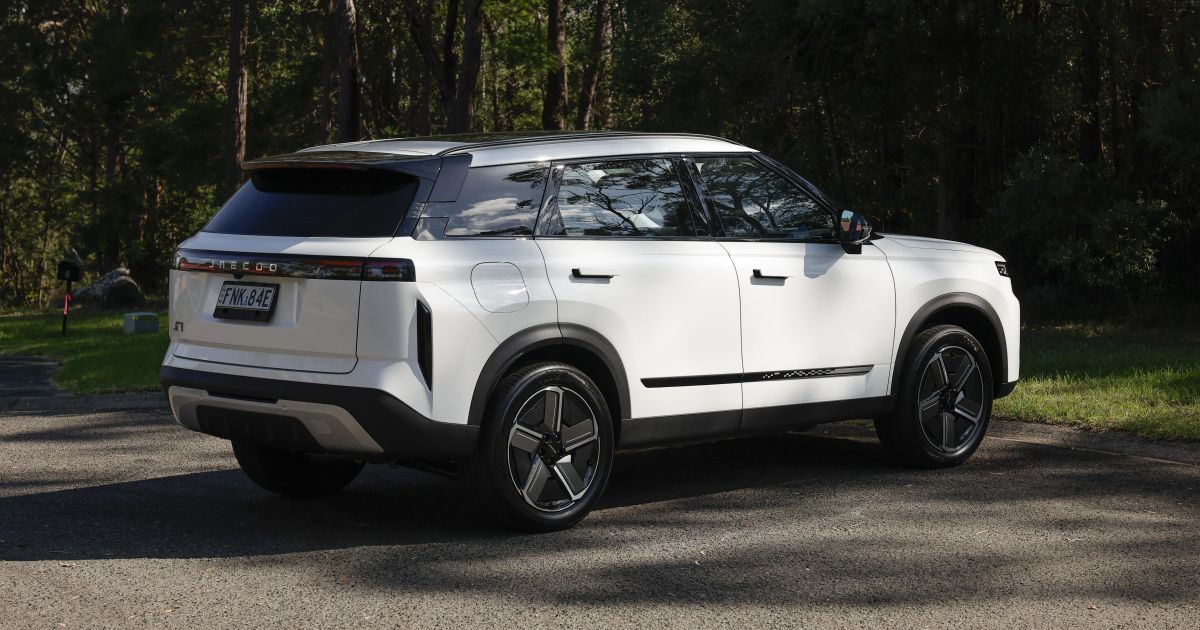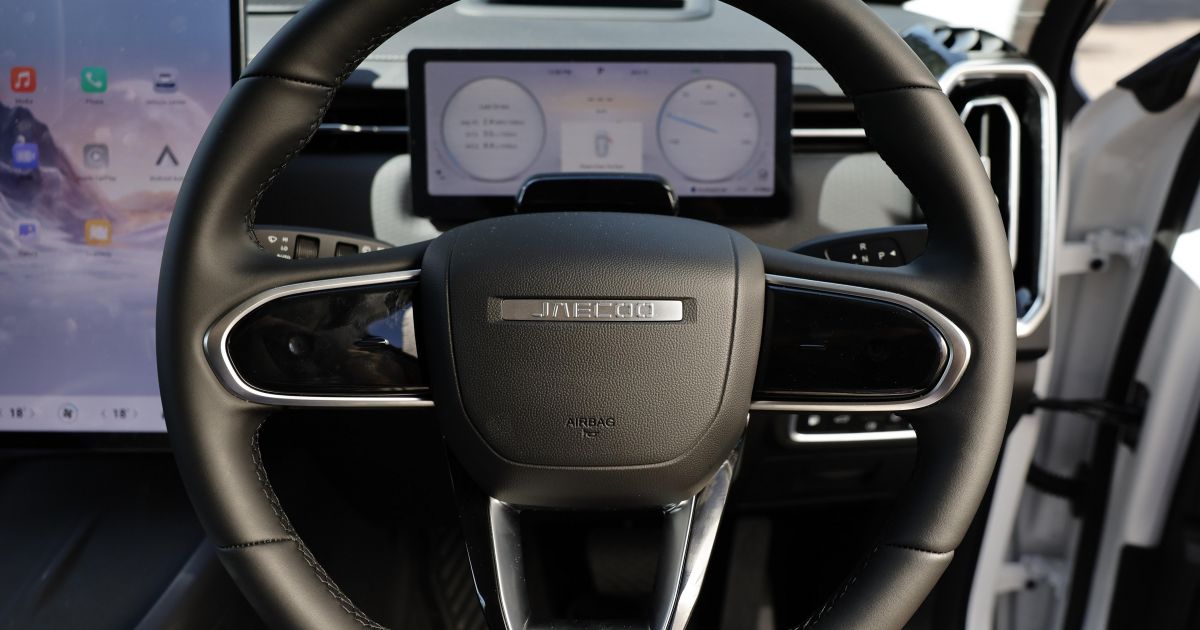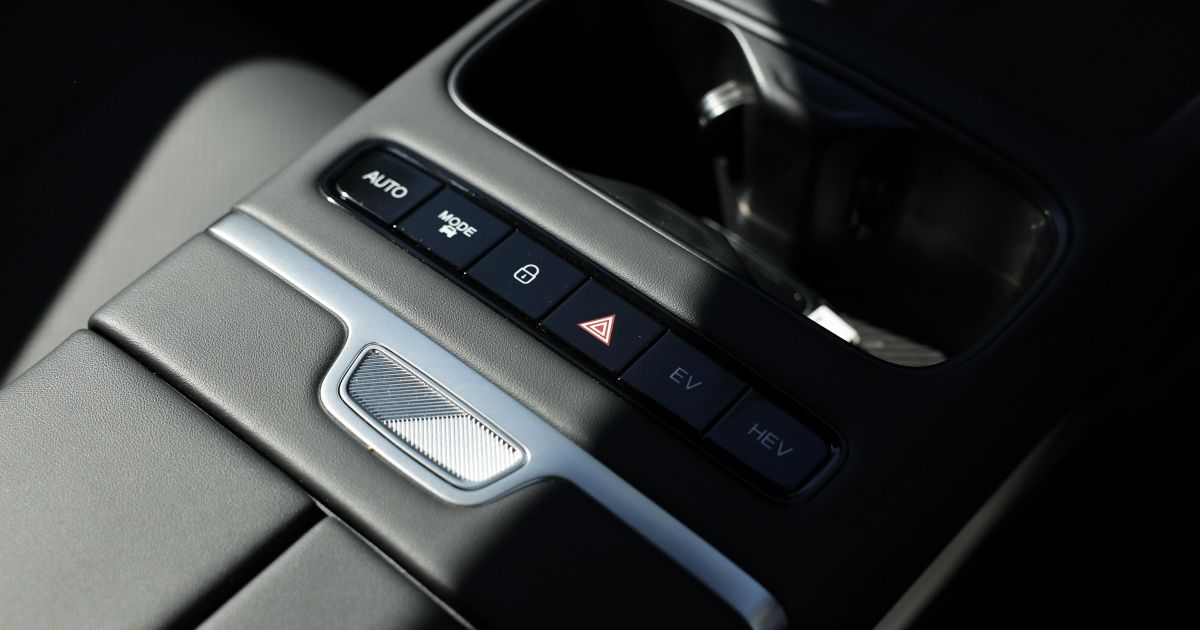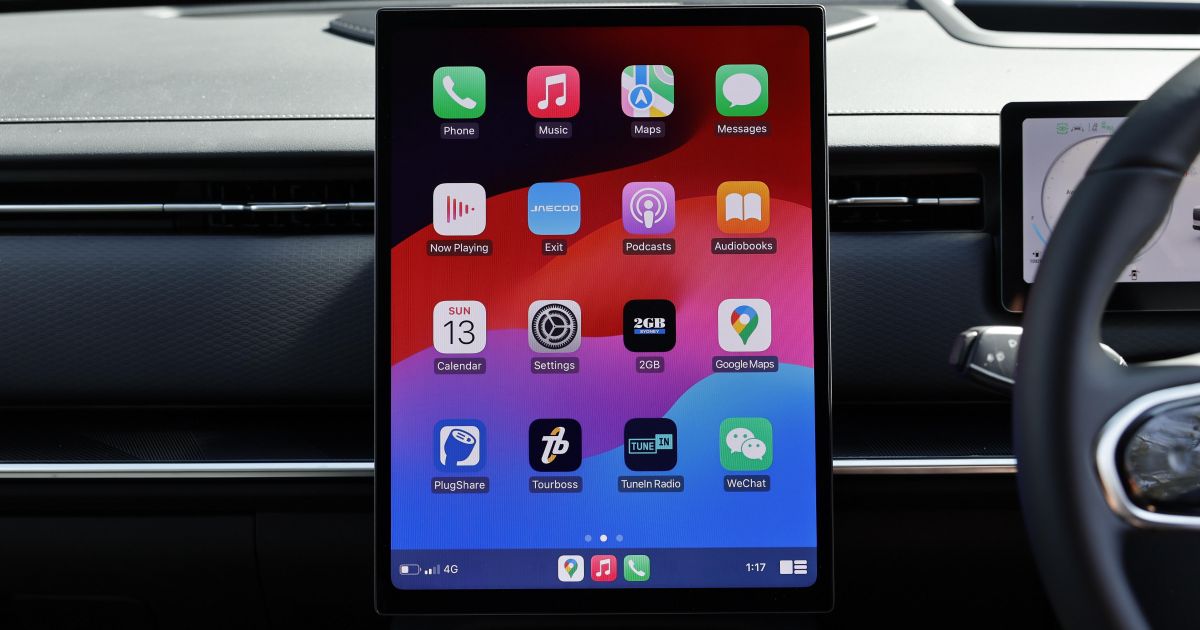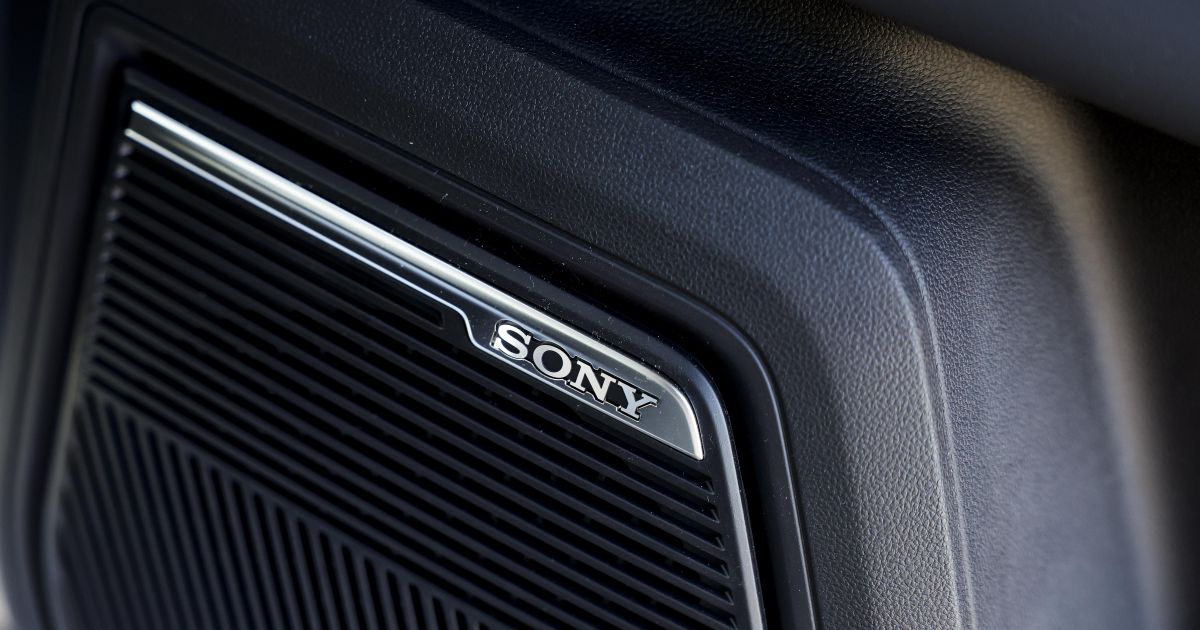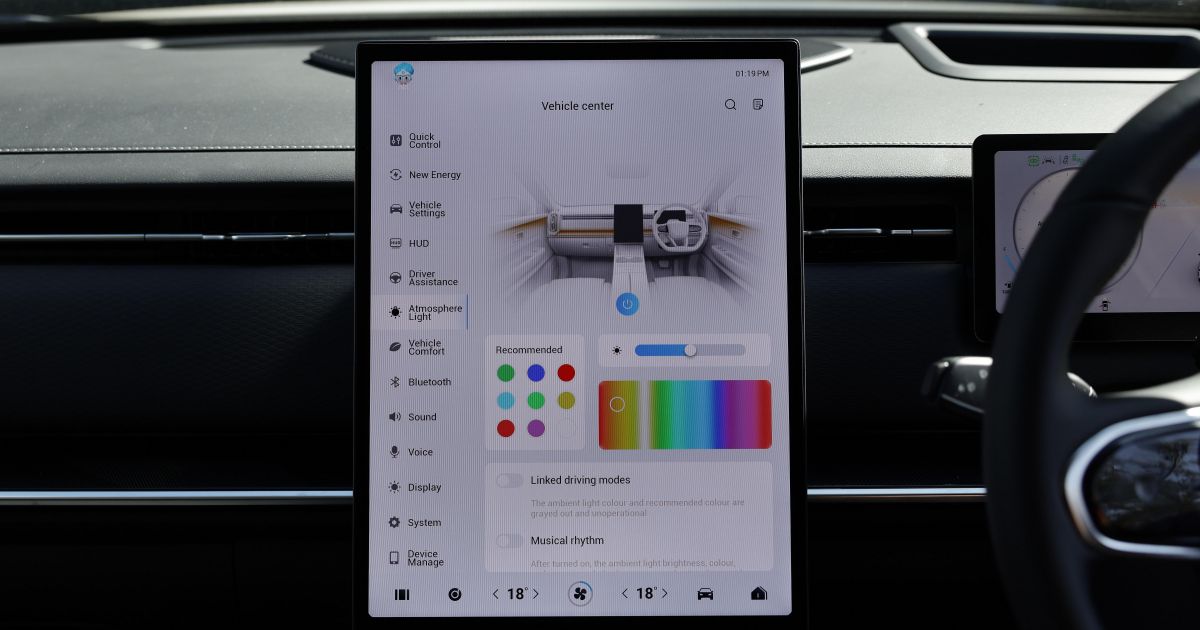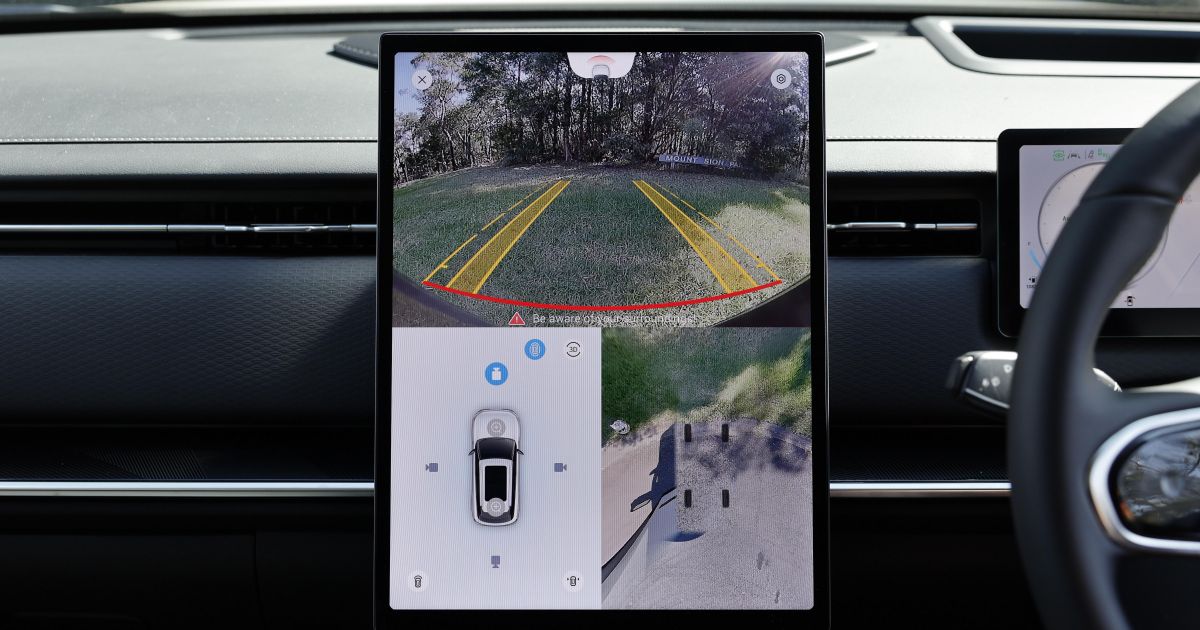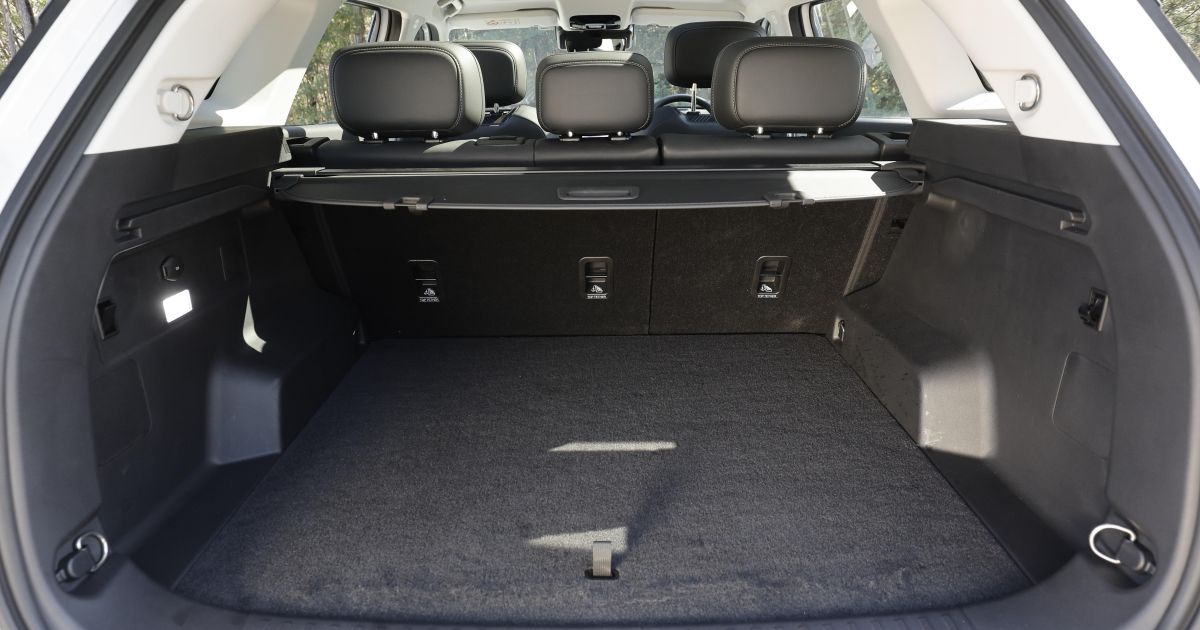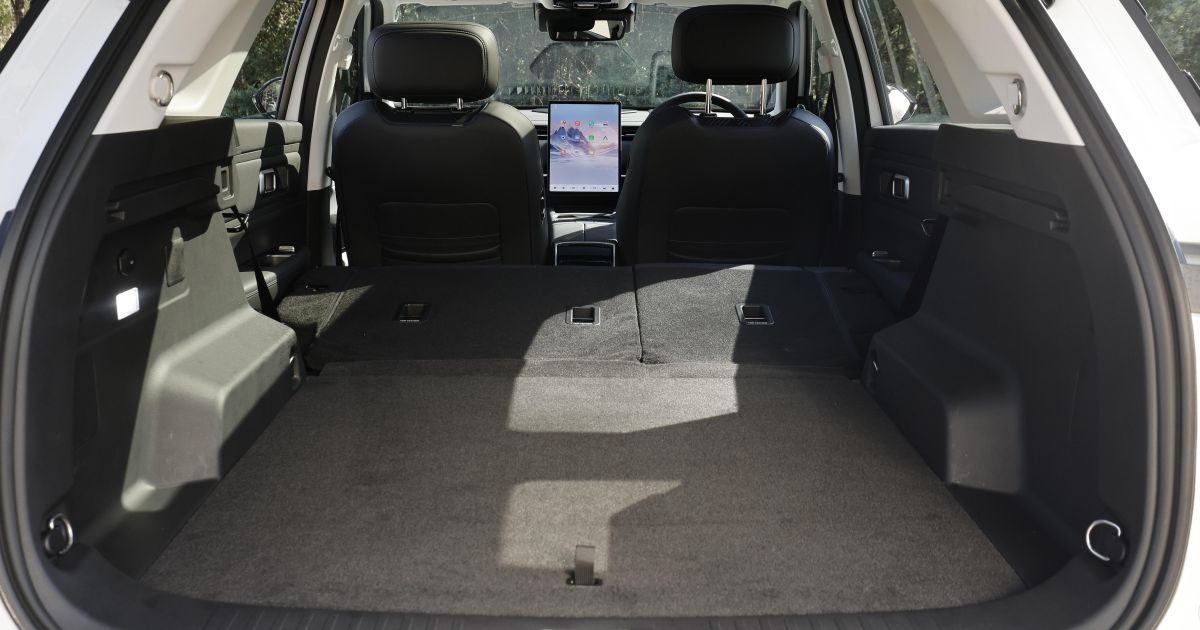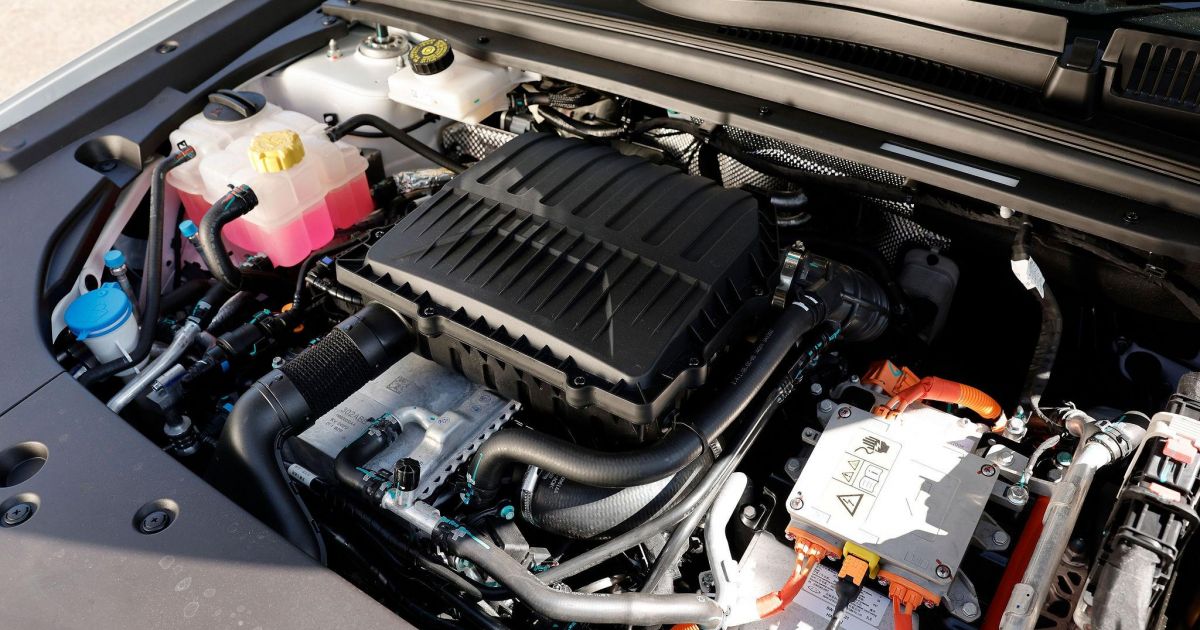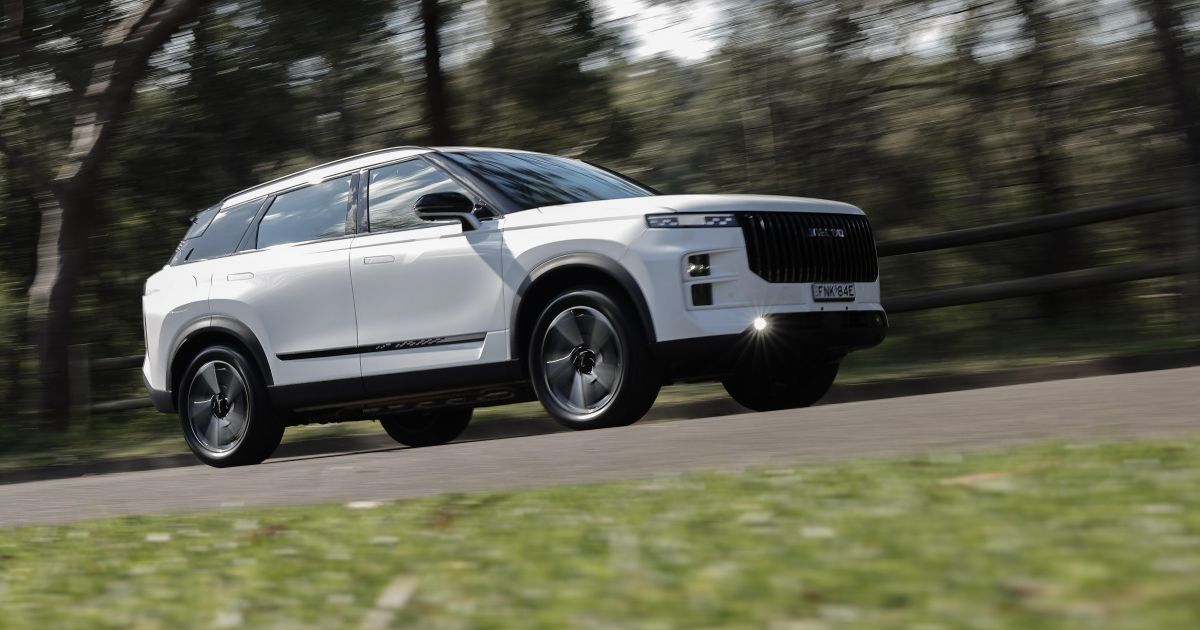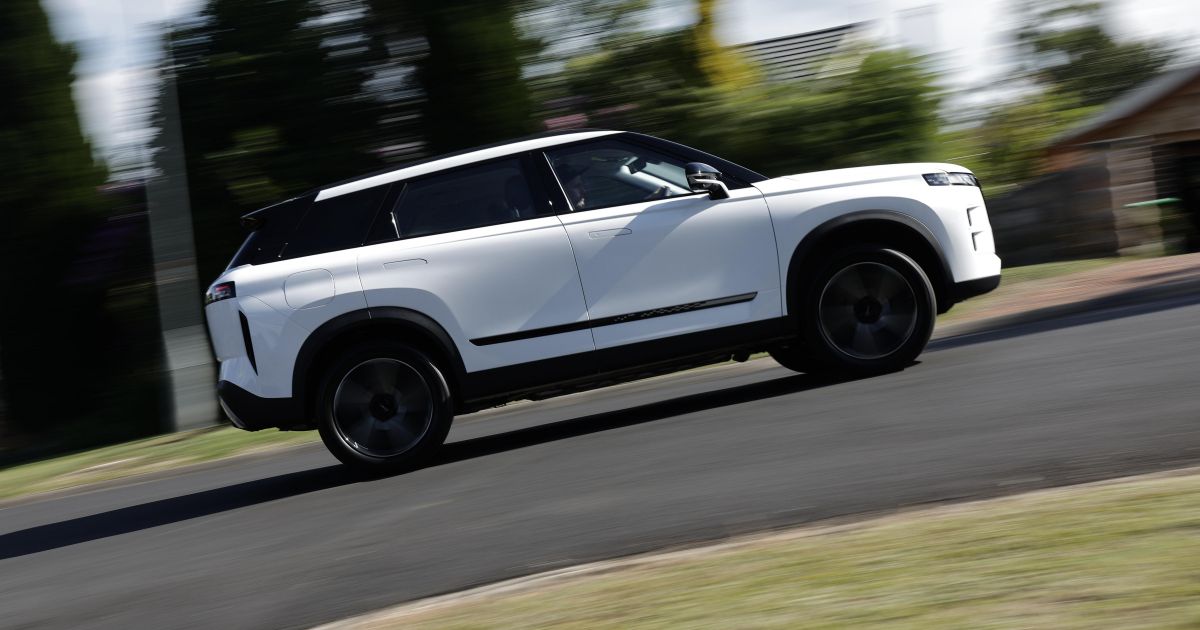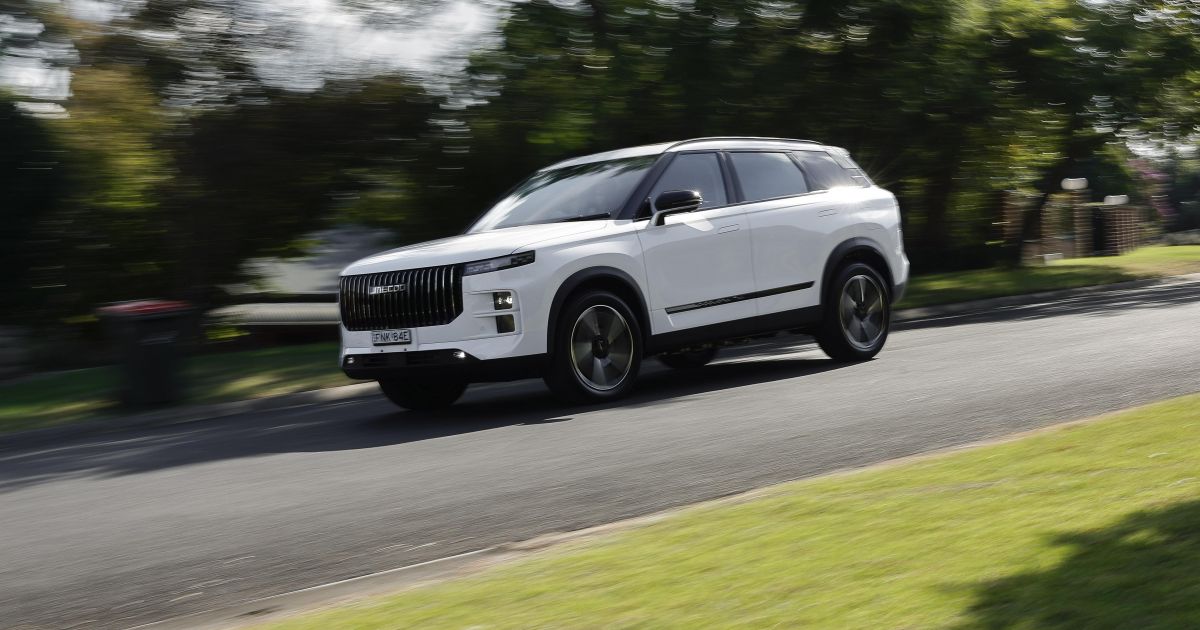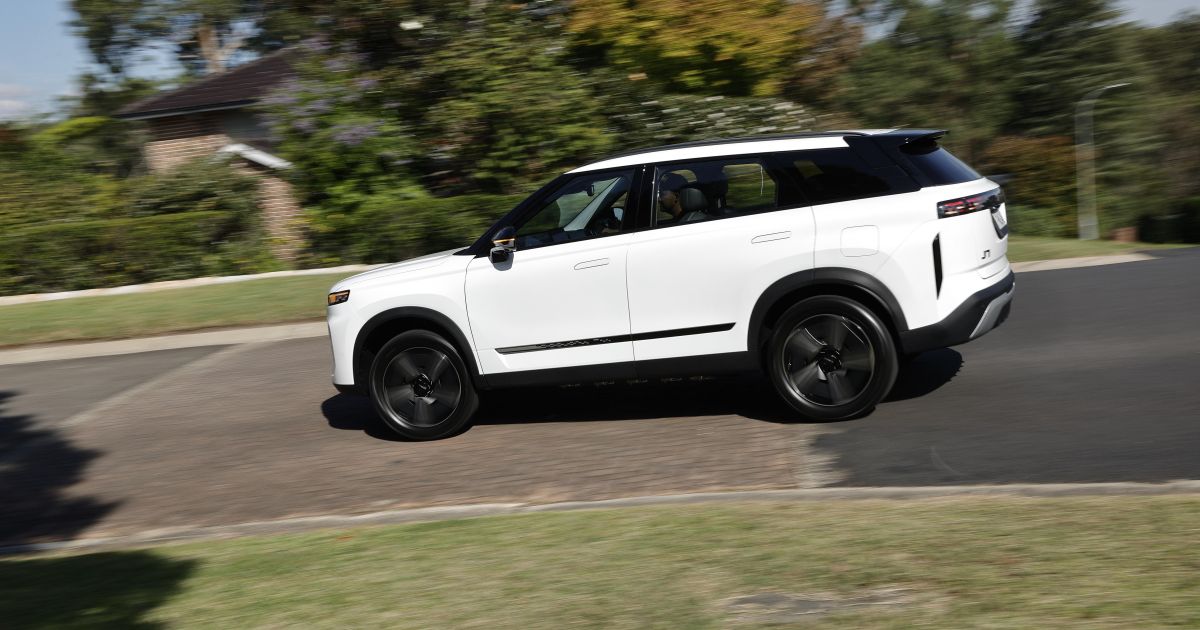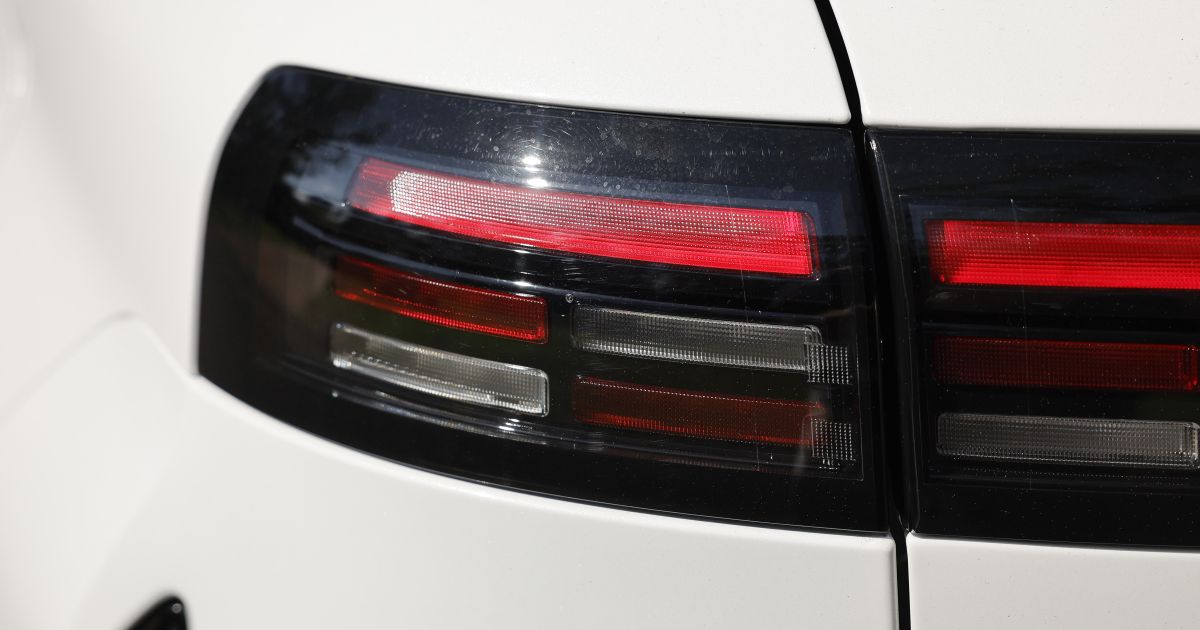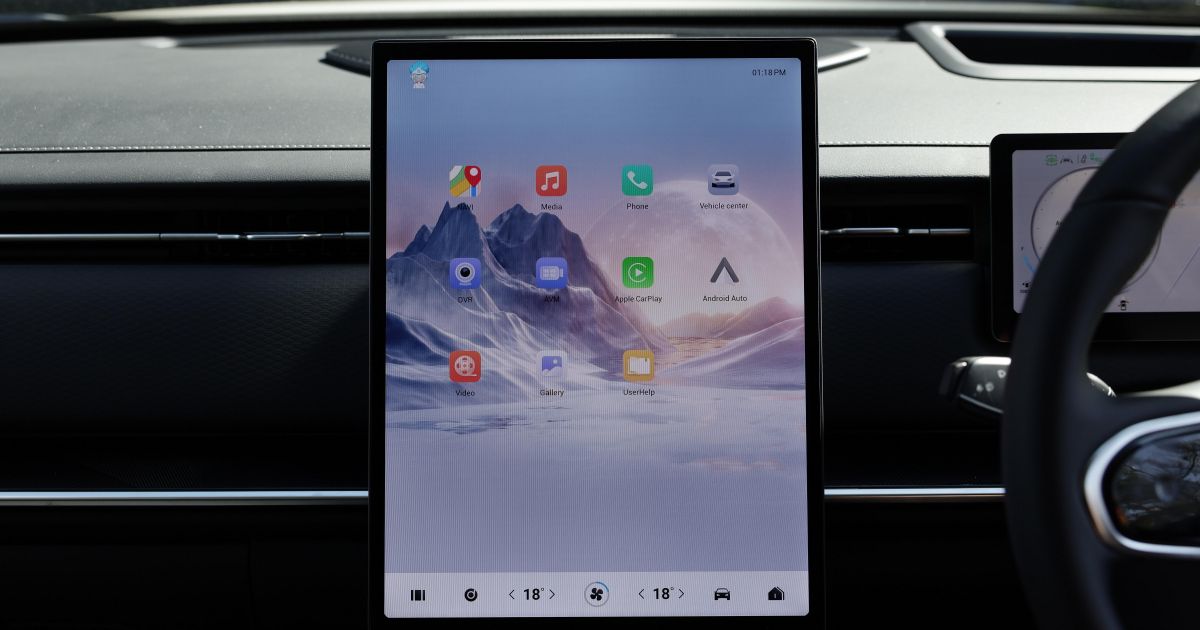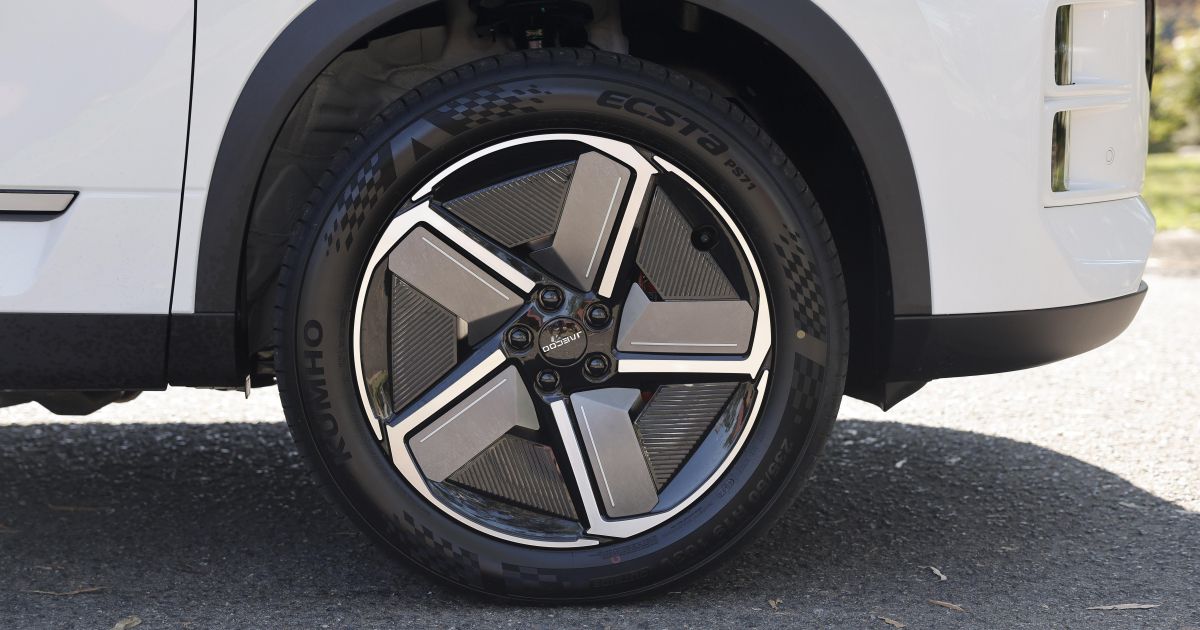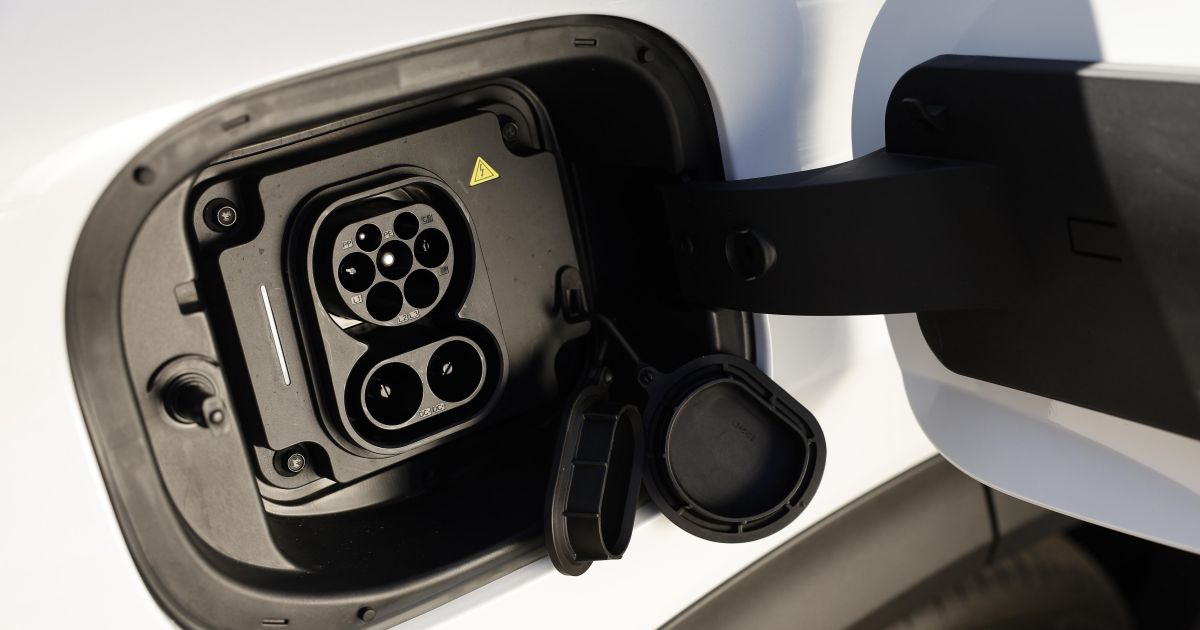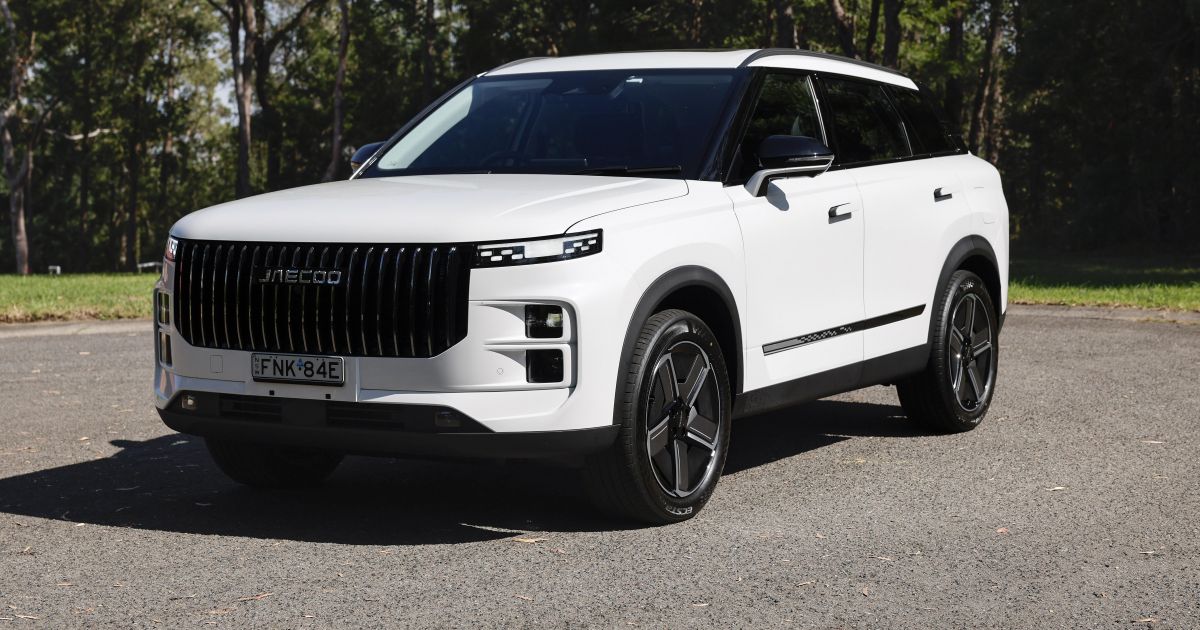The affordable plug-in hybrid war is in full swing, and this is the latest entrant – the Jaecoo J7 SHS Summit.
WATCH: Paul’s international launch review of the 2025 Jaecoo J7 SHS
If you’re wondering, SHS stands for Super Hybrid System, and in this review you’ll find out whether this stylish petrol-electric SUV lives up to that ideal.
With a striking price point, a sizeable battery with decent EV driving range and impressive combined driving range on offer, there’s a lot to like about this plug-in hybrid (PHEV) mid-size SUV.
How much does the Jaecoo J7 cost?
The SHS Summit sits at the top of the Jaecoo J7 model range, with three non-hybrid petrol models slotting in below it.
| Model | Drive-away pricing |
|---|---|
| Jaecoo J7 Core 2WD | $34,990 |
| Jaecoo J7 Track 2WD | $37,990 |
| Jaecoo J7 Ridge AWD | $42,990 |
| Jaecoo J7 SHS Summit | $47,990 |
As a comparison, there are some impressive plug-in hybrid SUVs priced in a similar bracket, including the BYD Sealion 6 (from $42,990) and the GWM Haval H6 GT PHEV (from $53,990 drive-away).
You’ll find details about standard specifications for the entire model range listed below.
If you’re curious about how the Jaecoo J7 compares to its rivals, check out our comparison tool
What is the Jaecoo J7 like on the inside?
The interior may be a little understated compared to some of the other SUVs in this segment, but there are some nice design elements and a good amount of thoughtfulness on offer here.
The material finishes and the design, firstly, are quite fetching.
There’s a neat cross-hatch finish on the dash as well as some rubberised elements and softer finishes up top. This high-grade version also has ambient lighting, which flows from the front doors to the back ones as well.
Even the carpet mats are pretty special looking, because they match the headlight design, and I really like them.
There are some as-you’d-expect elements like a fake leather-clad steering wheel, and faux leather seat trim, but the seats are pretty comfy even if they felt a little hot on warm days.
Thankfully there are ventilated front seats if you want to cool things down, and you’ve got heating for those seats as well.
The front passenger seat has toggles so you can remotely adjust it if you need to allow room for someone to get in the back, like in a Kia or Hyundai. Very, very nice tech. There are nice soft elbow pads where you’d expect, and there’s a centre box with cooling as a bonus.
You’ll also find cupholders and a wireless phone charger with a ventilation system so it’ll stop your phone from overheating, but there’s also a blank pad next to it.
Double chargers would be great! Underneath the charging pad is a massive section for extra storage with a nice rubberised mat so things won’t move around too much, and it’s got some charge ports down there – 12V and USBs.
There are large door trenches, and the door handles are chunky and conventional. But I don’t like the window switches. When you wonder which way is up and which is down – if up is forwards… nope. Up is to put the window down and down is to put the window up. That got on my nerves during my time with this car.
The big panoramic glass roof features an opening section, so if you do want to let the sunshine in and the air flow, you can. It adds plenty of light to the situation in the back for your rear seat riders, and it has a nice thick shade cover.
There’s one other thing I want to talk about before we get to the screens and tech: it’s the rear-view mirror. The auto-dimming mirror has too much convex – it’s kind of like a passenger mirror rather than a look-out-the-back-window mirror. And it’s terrible. Like, really bad. But the side mirrors are quite large, and they do help out a lot, along with a surround-view camera system too.
Now, the central touchscreen is a big unit, at 14.8 inches, and it will take some getting used to. But I do think that it is relatively good in terms of the menus and the controls on offer, and you’ll learn your way around it more quickly than in some other vehicles with the screen as the primary controller.
It has a built-in navigation system, and it’s pretty quick to load with pinch-to-zoom functionally. The nav also has charging port locations, so if you want to find out where your nearest charger is, you can do that.
And if you prefer to use smartphone mirroring, it has wireless Apple CarPlay and Android Auto. While the fan controls disappear when you’re mirroring your phone, you just need to swipe up at the bottom to get to the temp system settings. Annoyingly, the voice control didn’t work that well for the ventilation.
You can also adjust your seat comfort, turn on your seat heating or ventilation – all on-screen. There are also different settings for adjusting the climate system. All the stuff that you need is just a tap away.
The menus are deep, so spending some time in a Jaecoo showroom mightn’t be a bad idea, to learn more about the system before you drive away. I think it’s easy, but I’ve driven lots of cars with more annoying tech.
There are multiple screen-scrolls of safety tech adjustments you might want to get into, but there is otherwise a dropdown section to adjust things like the lane departure warning, driver monitoring camera system, and a number of other functions.
There are neat things, like the fact you can customise your steering wheel buttons – the little star button can be your dash-cam shortcut, for instance. You can go through the screen or steering wheel controls to adjust your head-up display, and the HUD is pretty good. Snow mode turns it blue, which is a nice touch.
The steering wheel controls are piano black – which I don’t like because they can look grimy really fast – but they are backlit. On the left of the wheel there’s a combination wiper, blinker and headlight stalk, while there’s a column-mounted gear shifter on the right.
In the back, with the driver’s seat set for my driving position, at 182cm or 6’0” tall I had lots of space, including ample legroom and a decent amount of foot room, and the headroom is very good too. If you’ve got tall teenagers, they’ll fit.
But there’s an annoying oversight in the back – there’s just one directional air vent. You can adjust where the air goes, but it’ll only go to one side of the cabin. Odd.
There are USB-A and USB-C ports to keep rear-seat occupants charged up, and multi-pocket pockets on the seat backs. With bottle holders in the doors and soft elbow pads, it all feels pretty good.
There are also ISOFIX child seat anchors and three top-tether points, plus there’s a flip-down armrest with cupholders, not to mention grab handles in the back and lights on the sides, too.
But the boot space could be a concern for some.
There’s notably less cargo capacity in the SHS and AWD variants, at 340 litres with the rear seats up, compared to 424L in the FWD vehicles. Fold the rear seats down, and again the FWDs have the advantage, at 1349 versus 1265 litres.
Then there’s the situation with the spare wheel. There isn’t one in the SHS, which could be a deal-breaker for rural buyers. Every other version comes with one.
If you’re curious about how the Jaecoo J7 compares to its rivals, check out our comparison tool
What’s under the bonnet?
The base versions of the Jaecoo J7 have a good powertrain, but this one is a peach.
| Specifications | Jaecoo J7 SHS |
|---|---|
| Engine | 1.5-litre four-cylinder turbo-petrol |
| Engine outputs | 105kW 215Nm |
| Electric motor outputs | 150kW 310Nm |
| System outputs | 255kW 525Nm |
| Battery | 18.3kWh LFP |
| Transmission | Single-speed hybrid transmission |
| Drive type | FWD |
| Weight | 1794kg |
| Fuel economy (claimed) | 1.0L/100km |
| Fuel economy (as tested) | 4.5L/100km |
| Electric driving range (PHEV) | 90km |
| Fuel tank capacity | 60L |
| Fuel requirement | 95-octane premium unleaded |
| CO2 emissions | 31g/km |
On my test, I managed to get 83km of EV driving done before the engine flicked on, making for an impressive “first 100km” figure displayed at 1.2L/100km. The screen also showed an electric-motor efficiency figure of 15.2kWh per 100km (the claim is 15.9kWh/100km).
I followed that up with extended testing in HEV mode, where the car showed a displayed combined figure of 4.5L/100km. Certainly impressive, and it gives you the idea that it could well live up to the claim of a combined maximum driving range of 1200km with the battery and petrol tank full.
Speaking of, the J7 requires 95 RON premium unleaded, and it has the biggest fuel tank capacity of the entire range, with 60L on offer – this could well be one for those who hate going to the servo.
If you’re curious about how the Jaecoo J7 compares to its rivals, check out our comparison tool
How does the Jaecoo J7 drive?
The way I like to think of PHEVs like this is they’re EVs when you want them to be, but hybrids when you need them to be.
The SHS can run as a fully electric SUV, with a backup petrol engine to help you out once you deplete the battery pack.
If you prefer to drive in full EV mode, there are buttons down between the seats to switch modes. You can even enable an extended EV mode to get the most out of the battery pack. So, if you want to stay in all-electric mode for as long as possible, the option is there.
That said, you’ve also got the petrol engine on hand to support the system. I drove it as an EV to try and use all the battery range, and then as a hybrid too, and it performed really well in both instances.
In hybrid mode, it uses the petrol engine to power the system, but it’ll still run in EV mode occasionally, even while the petrol engine is on, working to generate power for the battery system. It’s a bit of a unique setup, but it works well and feels surprisingly natural.
You’ll likely find this car easier to live with than a lot of newer plug-in hybrids, EVs, or some of the other new Chinese models. It’s compelling in terms of overall driving experience: well-rounded, with decent power even in EV mode, and heaps when you’re in hybrid mode and hammer it.
As for the drive experience? It’s good. Nothing mind-blowing, but very easy to get used to.
Thankfully, the safety systems aren’t too intrusive. There’s speed sign recognition, and if you mute it, it stays muted. The only slightly annoying feature is the driver monitoring camera, which will bing-bong at you if you look at the screen too long. But even that’s less aggressive than in some other cars in this segment.
Technology integration is solid, and overall, the drive is a pretty confident one. The steering isn’t super engaging, but it’s responsive and trustworthy. If you’re not an enthusiastic thrill-seeking driver, you’ll find it handles corners just fine.
Ride comfort is decent too. This model is a bit heavier than the standard petrol J7, and the suspension feels sharper and firmer, but it’s still comfortable in mixed driving situations. The suspension stays composed without tossing you around the cabin, which is great if you prefer a firmer but still comfortable ride.
There are also different drive modes: Normal, Eco, and Sport. I mostly used Normal. Sport gives you a bit more punch and quicker response, while Eco tones everything down, including the regenerative braking.
Speaking of, the regen is not as strong as in some full EVs or aggressive hybrids, but it brings you down to a walking pace smoothly when you lift off the accelerator – nice and gradual.
Now, onto EV range. Did I get the claimed 90km from a full charge? Not quite, but I came close.
I didn’t push it to the absolute limit or activate the emergency EV reserve – there’s a warning that suggests that’s not great for the battery. Still, I got 83km from a charge, which is a very usable electric-only range for most commutes. Not bad at all.
When the battery runs out, the petrol engine takes over in hybrid (HEV) mode. You can switch between modes, as I said, so essentially it is able to be tailored to the situation you find yourself in.
If you’re curious about how the Jaecoo J7 compares to its rivals, check out our comparison tool
What do you get?
Wondering whether or not it’s worth spending more on the top-spec SHS Summit, or save some pennies?
2025 Jaecoo J7 Core 2WD equipment highlights:
- 18-inch alloy wheels
- Temporary spare wheel
- Roof rails
- Power-retracting door handles
- Gloss black side mirrors
- Gloss black rear spoiler
- Projector LED headlights
- LED tail-lights
- Rear fog light
- 10.25-inch digital instrument cluster
- 13.2-inch touchscreen infotainment system
- Wired and wireless Apple CarPlay and Android Auto
- 6-speaker sound system
- Intelligent voice assistant
- Satellite navigation
- AM/FM/DAB+ radio
- Front and rear USB-A and USB-C ports
- Manual air-conditioning
- Electronic gear shifter
- Premium steering wheel
- Synthetic leather upholstery
- 6-way power driver’s seat
- 4-way power front passenger seat
J7 Track 2WD highlights:
- Rain-sensing wipers
- Acoustic glass windscreen
- Power tailgate
- 50W wireless charger
- 8-speaker Sony sound system
- Dual-zone climate control
- Colour-selectable interior ambient lighting
- Illuminated vanity mirrors
- Heated front seats
- Power child safety locks
- Boot 12V power outlet
J7 Ridge AWD highlights:
- 19-inch alloy wheels
- Full-sized spare wheel
- Red brake calipers
- Panoramic glass sunroof
- Privacy glass
- Puddle lights
- 14.8-inch touchscreen infotainment system
- Head-up display
- Alloy pedals
- Auto-dimming rear-view mirror
- Heated steering wheel
- Perforated synthetic leather upholstery
- Ventilated front seats
- 4-way power driver’s seat lumbar
- Driver seat and mirror position memory
J7 SHS Summit adds:
- Unique aero-design side mirrors
- Dark grey roof rails
- 19-inch aero wheels
- Tyre repair kit
- J7 SHS-exclusive interior design
- Steering column-mounted gear selector
- *Removes heated steering wheel
If you’re curious about how the Jaecoo J7 compares to its rivals, check out our comparison tool
Is the Jaecoo J7 SHS safe?
The Jaecoo J7 PHEV has achieved a five-star Euro NCAP safety rating based on 2025 testing. ANCAP hasn’t run the numbers on it yet, but you can likely deduce that it’ll get the top score here, too.
| Category | Jaecoo J7 SHS |
|---|---|
| Adult occupant protection | 81 per cent |
| Child occupant protection | 80 per cent |
| Vulnerable road user protection | 80 per cent |
| Safety assist | 80 per cent |
Aussie models cop the same level of advanced safety kit as those sold in Europe, so there’s a whole shopping list of the expected safety features and tech.
Standard safety features include:
- 7 airbags incl. front-centre
- Autonomous emergency braking
- Pedestrian
- Cyclist
- Junction
- Reverse pedestrian (backover)
- Adaptive cruise control
- Blind-spot monitoring
- Driver monitoring system
- Lane departure warning
- Emergency Lane Keeping assist
- Lane centring
- Lane change assist
- Rear cross-traffic alert
- Reversing camera
- Rear parking sensors
- Traffic Jam Assist
- Tyre pressure monitoring system
J7 Track 2WD adds:
- 8 airbags incl. driver’s knee
- Surround-view camera
- Front parking sensors
J7 Ridge AWD and SHS Summit add:
- Built-in dashcam
That built-in dash-cam is a massive bonus. You can set it up so that the favourite ‘star’ button on the steering wheel triggers it to activate, capturing the moment (and the moments leading up to the moment) to an on-board data card. There are no messy cables, either!
Oddly, the entry-level Core version has seven airbags (dual front, front side, front centre and full-length curtain), while the Track and all variants above it add a driver’s knee airbag (eight in total).
If you’re curious about how the Jaecoo J7 compares to its rivals, check out our comparison tool
How much does the Jaecoo J7 SHS cost to run?
The Jaecoo J7 has a strong ownership promise from a new brand.
| Servicing and Warranty | Jaecoo J7 SHS |
|---|---|
| Warranty | 8 years, unlimited kilometres |
| Roadside assistance | 8 years – service activated |
| Service intervals | 12 months or 15,000km |
| Capped-price servicing | 8 years or 120,000km |
| Total capped-price service cost | $3368 |
There’s an eight-year, unlimited-kilometre warranty, which is among the best in the business, and it could actually be a better option for many customers than a 10-year warranty with stipulations or sky-high servicing costs.
Jaecoo offers an eight-year/120,000km capped-price servicing plan, with intervals set at 12 months/15,000km per visit.
The average annual service cost over that eight-year program is $421 per visit – not bad. And, if you service with Jaecoo’s network of servicing locations, you’ll get up to eight years of roadside assistance as well.
If you’re curious about how the Jaecoo J7 compares to its rivals, check out our comparison tool
CarExpert’s Take on the Jaecoo J7
If you’re in the market for a new plug-in hybrid SUV and you like the look of this one, you really ought to get into a showroom and check it out.
It’s an impressively finished, comfortable and likeable SUV, with a decent price and an enticing promise when it comes to ongoing ownership costs and other aftersales considerations.
Interested in buying a Jaecoo J7? Get in touch with one of CarExpert’s trusted dealers here
Click the images for the full gallery
MORE: Everything Jaecoo J7

